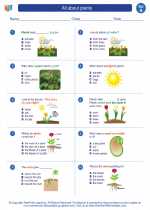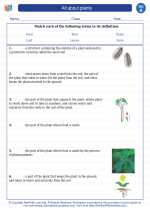Gas Giants
Gas giants are a type of planet that are composed mainly of gases, such as hydrogen and helium, with relatively small solid cores. The four gas giants in our solar system are Jupiter, Saturn, Uranus, and Neptune. These planets are quite different from the rocky planets like Earth and Mars. Here's a study guide to help you understand gas giants better:
Characteristics of Gas Giants:
- Composed mainly of hydrogen and helium
- Have thick atmospheres
- Do not have solid surfaces
- Have many moons and rings
- Large in size compared to the terrestrial planets
Jupiter:
Jupiter is the largest planet in our solar system. It has a distinct red spot, which is a giant storm, and a strong magnetic field. Jupiter has at least 79 moons.
Saturn:
Saturn is known for its beautiful and extensive ring system. It is the second largest planet in our solar system and has at least 82 moons.
Uranus:
Uranus is unique because it rotates on its side. It has a bluish-green color due to the presence of methane in its atmosphere. Uranus has 27 known moons.
Neptune:
Neptune is the farthest planet from the Sun and is known for its deep blue color. It has the strongest winds in the solar system and 14 known moons.
Interesting Facts:
- Gas giants are sometimes referred to as "Jovian planets," named after Jupiter.
- They are much larger than Earth and have lower densities.
- Their atmospheres can contain other compounds such as ammonia and water vapor.
By understanding the characteristics and features of gas giants, we can gain a deeper appreciation for the diversity of planets in our solar system.
[Gas Giants] Related Worksheets and Study Guides:
.◂Science Worksheets and Study Guides First Grade. All about plants

 Worksheet/Answer key
Worksheet/Answer key
 Worksheet/Answer key
Worksheet/Answer key
 Worksheet/Answer key
Worksheet/Answer key
 Vocabulary/Answer key
Vocabulary/Answer key
